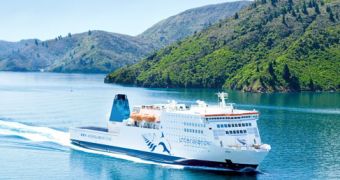Only yesterday, Rolls-Royce (i.e. world leader for power systems) made it public news that its recently developed marine gas engine is to soon become available on the US market, as the country's Environmental Protection Agency (EPA) approved it for sale in this part of the world.
Apparently, this marine gas engine passed with flying colors all of the tests meant to verify whether or not it could abide by the international environmental standards which are to be implemented starting with the year 2016, and which are considerably stricter than those previous to them.
As the Rolls-Royce company explains, their engine has been designed and manufactured in such ways that its fuel efficiency has been significantly improved, something which in turn translates into a reduced ecological footprint.
Moreover, it is argued that, thanks to the use of state-of-the-art technologies, harmful methane emissions have been brought down to considerably low levels.
Given the fact that, as we previously discussed, methane is known to contribute to phenomena such as climate change and global warming once it hits the atmosphere, this comes as good news indeed.
Speaking on behalf of the company, President – Merchant Neil Gilliver explained how, “Our innovative vessel designs and gas-based power & propulsion systems help ship owners reduce through life costs and improve operational efficiency, while dramatically reducing harmful emissions and meeting strident future international environmental regulations.”
He also added that, “The EPA approval gives us a head start in the US market, and we are proud to be able to provide ship owners with an efficient and long-term solution for reduced fuel consumption and emissions.”
In case you were wondering, this particular engine is highly suitable for use on tugs (i.e. boats that maneuver other vessels by pushing or towing them), ferries, coastal vessels and offshore support vessels. As well as this, it is already being used by car and coastal ferries in Europe.

 14 DAY TRIAL //
14 DAY TRIAL //